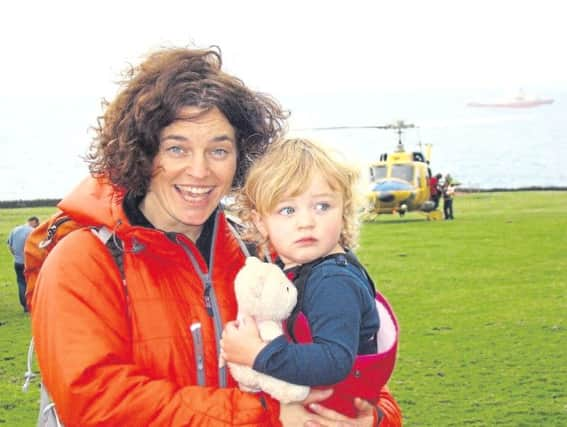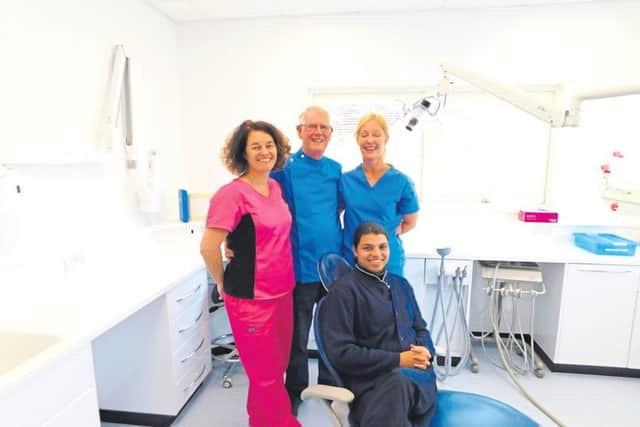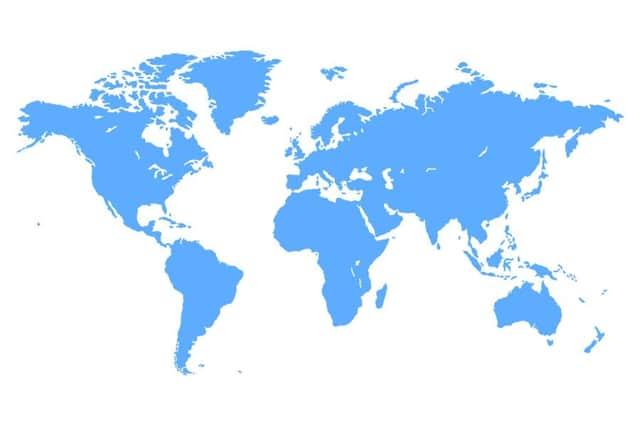Edinburgh dentist to visit world's most remote inhabited island dubbed Edinburgh of the Seven Seas


Her remarkable “commute” takes her to Tristan da Cunha, a huge cloud-covered volcano rock in the middle of the South Atlantic, with a population of just 264.
And she takes her daughter to work with her. Elika, eight, travels with mum as they leave their Edinburgh home to fly to Cape Town, then set off on a nine-day journey by boat to the island, 1,746 miles away. It’s midway between Africa and South America.
Advertisement
Hide AdAdvertisement
Hide AdDepending on the weather they either take a fishing boat or board the Antarctic ice-breaker, the S.A. Agulhas II, which then means taking a helicopter to the shore.


Penny works in Edinburgh of the Seven Seas, the capital of Tristan da Cunha, which is a British overseas territory. Its tiny population is largely descended from Scottish soldier William Glass, who set up a garrison there in 1816.
“It’s a great adventure for Elika and a chance for me to work in one of the most remote places on Earth,” said Penny.
“We go out every year, for almost five weeks, in August or September through until October. I treat the patients and Elika goes to the island school. I love working in isolated places and remote environments.
Advertisement
Hide AdAdvertisement
Hide Ad“It’s a joy being part of a dental team providing dental treatment and preventing dental decay in the children.


Penny previously worked with the British Antarctic Survey, treating patients on the British Antarctic bases near the South Pole.
But she said: “Tristan da Cunha is like nowhere else on earth. They are a warm and welcoming people and no traffic jams on the two miles of island road, just peace and tranquillity.”
Penny and Dundee dental technician, Bob Carse, 70, worked on the design and kit out of the dental surgeries, laboratories and sterilisation unit, within the newly built Camogli Hospital.
Advertisement
Hide AdAdvertisement
Hide AdThe hospital was funded by the Department for International Development.
The rest of the year Penny works as a dentist in a surgery in Penicuik, Midlothian.
Tooth decay is a big issue, as it is around the world, and the team preaches the importance of dental health. “Tristan is used as an example of what happens when sugar is introduced to a sugar-free island,” said Bob.
Supply ships bring food to the island every six weeks and every family is allotted two sheep and a cow and most have a vegetable plot.
Advertisement
Hide AdAdvertisement
Hide AdBabies are usually born in South African maternity wards and mums-to-be travel there two months before their due date. James Glass, the island’s director of fisheries, did much of his training in Shetland and gained his scuba diving certificate in Fort William.
“We are Scots living on the edge of the world,” he said. “The internet has made us closer to our roots but you have to be up early to use it. We value the dental links with Scotland and can’t praise the team enough for the huge efforts it takes to get here.”
The British garrison set up in 1816 was later shut down but William Glass stayed on with his South African wife Maria, two children, and a handful of others. Many of his descendants still bear his name.
Most islanders are proud of their ancestry.